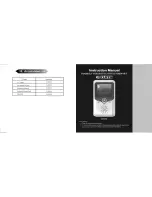
42
The current in these cables must not exceed the rating of the upstream circuit breakers.
The PE conductor (commonly called "earth", green/yellow wire) of the AC input network must imperatively be
connected to the earth terminals (yellow and green on the right on the DIN rail) before any other terminal (earth
busbar).
The neutral cable must be connected to the “N” output terminal of the associated circuit breaker.
The line cable must be connected to the other output terminal of the associated circuit breaker.
3.2.4
Battery cables
Disconnect batteries before any wiring and junction of the connector.
Please check the compatibility of voltage, current and setting according to the battery type before switching ON the
charger.
Checking of the charge voltage
Before connecting the batteries to the charger, first check their polarity.
Check also the battery voltage with a calibrated voltmeter. A too low voltage value on some types of batteries shows
irreversible damage and impossibility to recharge.
Any damage due to incorrect connections will be excluded from the warranty.
The table below defines the maximum battery cable cross-section allowable for the output connector:
Model
Minimum allowable
battery cable cross-section
Maximum allowable battery
cable cross-section
12-40
16 mm²
16 mm²
12-60
35 mm²
35 mm²
The installer should choose the type of cable (H07-VK, MX, etc.) according to the type of application and the applicable
standards.
3.2.5
DC Equipotential bonding cable to the ground
An equipotential wire for DC must* be installed between the metal casing of the shore-power unit and the negative
terminal of the motor or its connection bar.
This conductor must not be connected directly to the negative terminal of the DC circuit of the energy unit.
A stud + screw system is provided below the radiator for this purpose.
(*) Except in the case where the two connectors, positive and negative, of the DC diagram are isolated from the ground
(Earth).
3.2.6
Electromagnetic disturbance
We recommend a minimum distance of 2m between the unit and any potentially sensitive equipment.
Use shielded cables for all the connections (*). The shielding should be earthed at both the transmitting and the
receiving ends.
Keep cable length and shielding connections to a minimum.
Route cables as close as possible to conductive parts ("loose" cables or loops should be avoided
–
cables should be
placed against the hull or walls).
Keep power cables separate from battery cables.
Keep power cables separate from control cables (at least 200mm).
The cables should only supply power to this appliance; any deviation to power another appliance is prohibited.













































